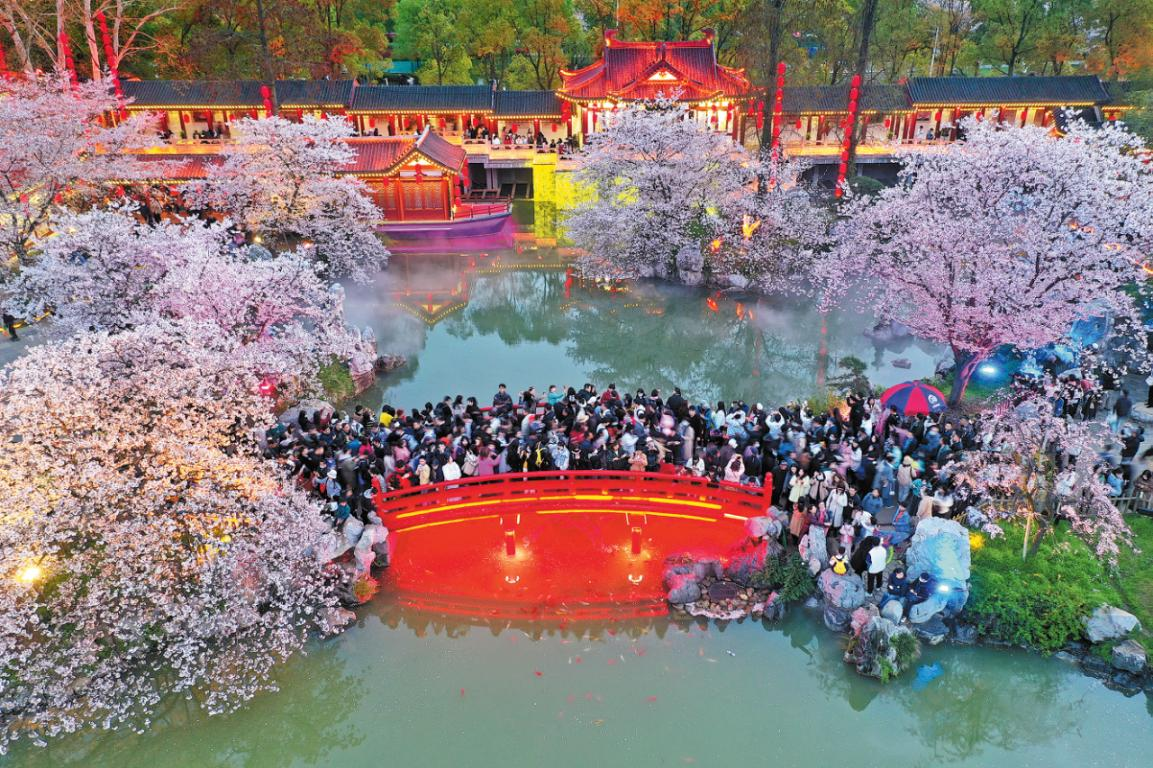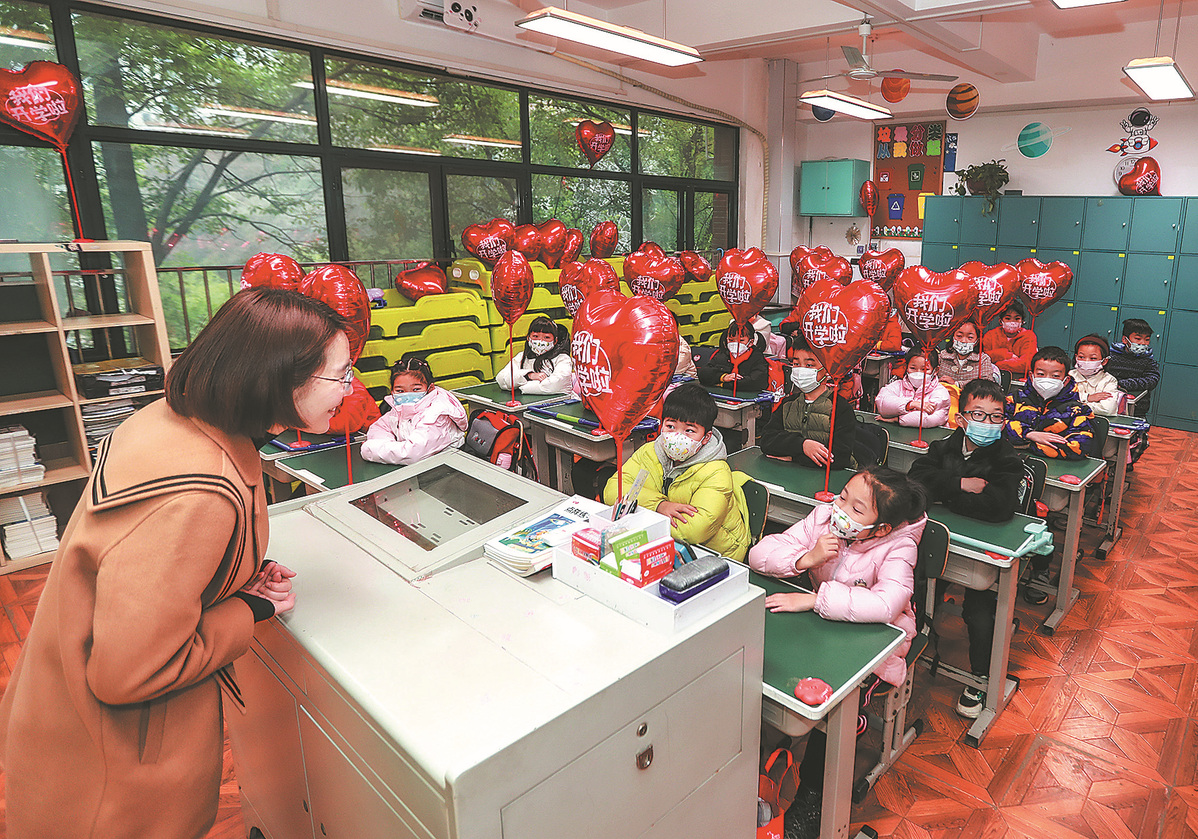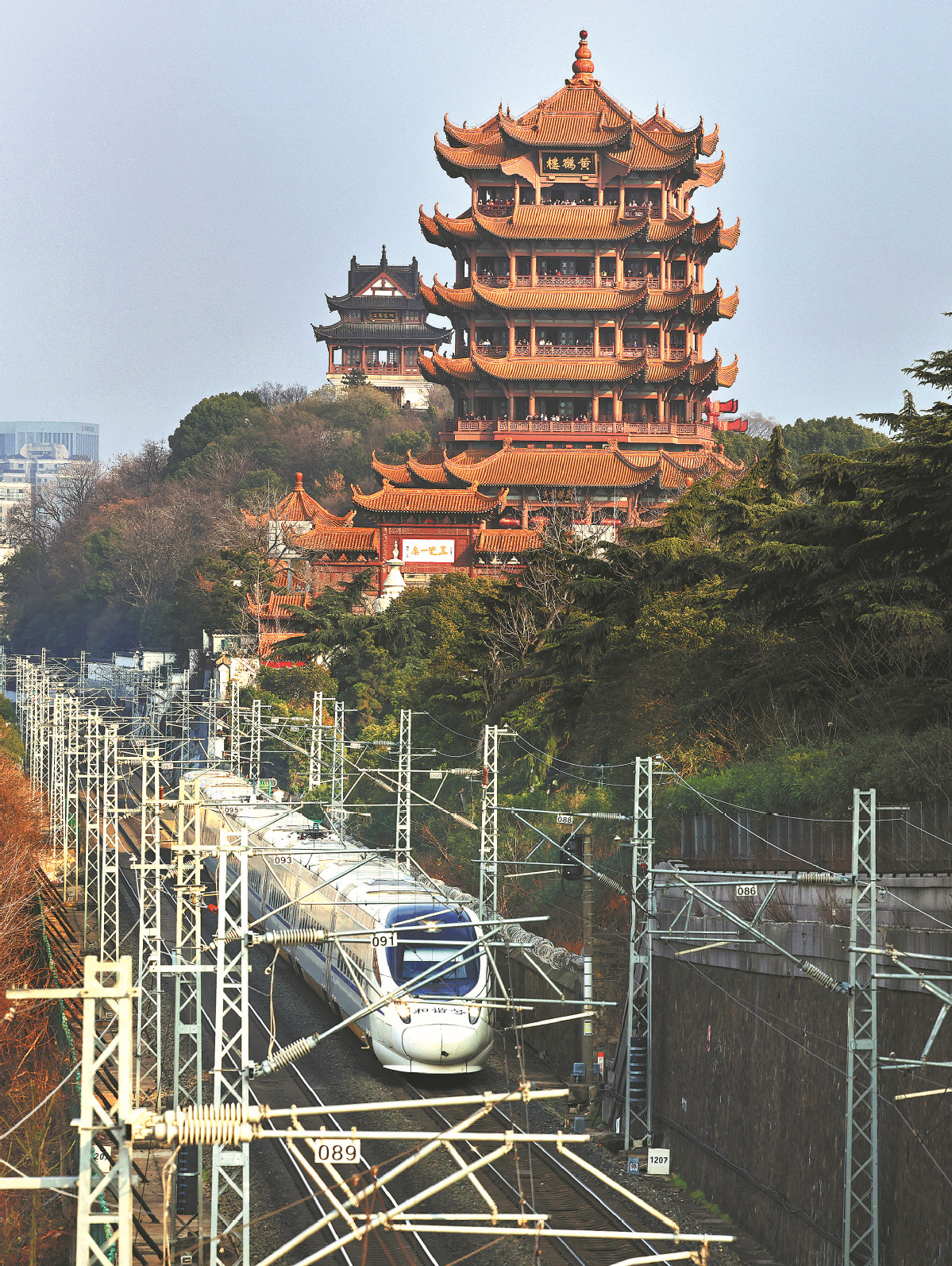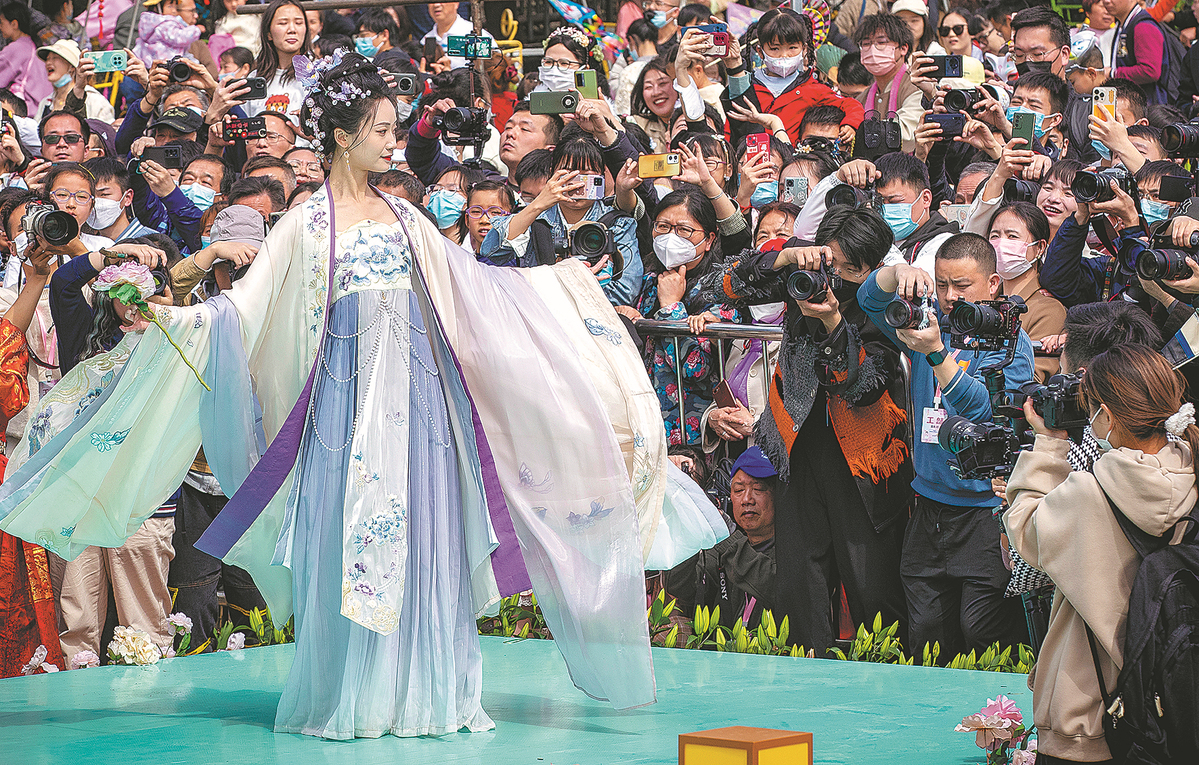Wuhan emerges from the shadow of COVID-19
Life in the city has returned to normal, three years after it was hit by the disease, CUI JIA and LIU KUN report from Wuhan
On a Saturday morning at the end of February, the indoor training facility at Wuhan Sports Center was packed with people playing badminton. The air was filled with the sounds of rackets hitting shuttlecocks, sneakers thumping on the courts and cheers for teammates.
Three years ago, this sports center in Wuhan, capital of Hubei province, was packed with COVID-19 patients and medical workers wearing white protective suits. The medical teams were sent from Jiangsu, Guizhou and Anhui provinces to aid the city after the training facility and the indoor stadium next door were turned into one of China's first makeshift hospitals — in just 72 hours — to contain the COVID-19 outbreak.
Back then, people called these makeshift hospitals "Noah's Ark "as the virus spread rapidly around Wuhan, a city with a population of about 13.65 million, and there were not enough medical resources, especially hospital beds, to meet the demand.
Zhao Shaodong, a coach at the sports center, said that some of the regulars have a special connection for the facility because they recovered there after contracting the infection. In total, 1,056 patients were treated at the facility, which was one of the largest makeshift COVID-19 hospitals in Wuhan.
"During breaks, they often show people pictures of what the facility was like when it was a makeshift hospital, and point out where their beds once were. Now that they are back and enjoying life, I believe both the Wuhan people and the city have stepped out of the shadows of the COVID-19 epidemic," Zhao said.
Wuhan detected its first case of novel coronavirus at the end of 2019, and the fatality rate was relatively high at the beginning of 2020 in the central Chinese city.
By then, the country had implemented a series of unprecedented measures in the city to contain the outbreak and save lives. More than three years later, Wuhan has pulled through and people's lives have returned to the pre-epidemic state.
The city's medical workers and residents have said that the Feb 23 announcement by the national health authorities that the COVID-19 epidemic had "basically" ended was like a reward for them, while the memories of how they battled the epidemic during its most deadly phase will never fade.



A high-speed train passes the Yellow Crane Tower in Wuhan in February.

